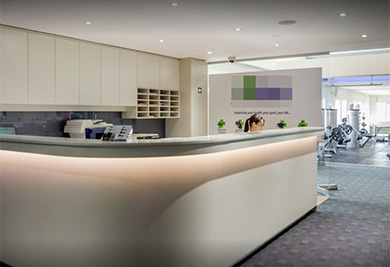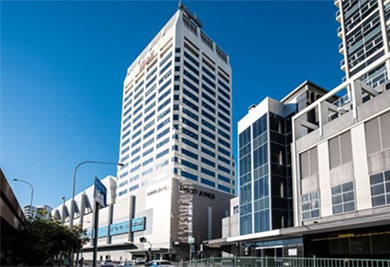Pain, numbness and tingling in the leg when exercising?
Getting tired or fatigued due to exercise is expected of your muscles, especially if they haven’t’ yet been conditioned to the load you are putting them through! But if you consistently get the same deep seeded aching, tightness and numbness in your calves at the same point of exercise and its not getting any better then it might be an idea to consider Compartment Syndrome…
Tell me more Jet!
But what is a ‘Compartment‘? A compartment is simply an area of the calve that encompasses a number of muscles and blood vessels, and that is surrounded by a sheath of fascia (strong connective tissue). Compartment syndrome occurs when the pressure inside a compartment builds to levels that impede blood flow.
What we need to establish here is that there are 2 types of compartment syndrome, one being a medical emergency is called Acute Compartment Syndrome, and if you sustain an injury and experience 3 or more of the 5 P‘s (Pain, Pallor, Paresthesia, Pulselessness and Paralysis) then call the ambulance ASAP! What we want to discuss (and manage) is the less severe form known as Chronic Exertional Compartment Syndrome

What structures are involved?
As you can imagine, this depends on which compartment is swelling out of control! There are 4 areas in which it can develop:
- Superficial posterior compartment: soleus and gastrocnemius muscles (the muscles you can see on the back of the leg)
- Deep posterior compartment: tibialis posterior, flexor hallucis longus, flexor digitorum longus (you cant see these ones unfortunately!)
- Lateral compartment: peroneus longus, peroneus brevus (muscles on the side of the leg)
- Anterior compartment: tibialis anterior, extensor hallucis longus, extensor digitorum longus (muscles on the front of the leg)
Its very rare to get compartment syndrome of the superficial compartment, mainly because these muscles have the ability to swell and grow unrestricted by surrounding structures. Keep reading and we will go into some detail about the other 3!
Ok Jet, but tell me what causes the muscles to swell and cause pain?
This is a relatively easy question to answer; overloading them. In most cases the pain and swelling of chronic compartment syndrome is caused by exercise, which in itself is meant to overload our cardiorespiratory and muscular systems so that our bodies can adapt to this new load. So a better question is: Why is it that the muscles involved in compartment syndrome aren’t adapting?
Its because they are doing too much work!
Elaborating on this is whats hard, because the reason why one person gets compartment syndrome is different to the next. It can come down to activity levels, weight, running style, footwear, muscular imbalances and biomechanics, the list goes on! Muscles are designed to work well and efficiently within a predetermined range. When they are asked to work outside of this range (either in terms of muscular strength, excessive joint motion or biomechanically) they don’t do too well, and they start to micro tear and with these tears come swelling.
The issue then arrises when the muscles (which are covered by a tough inelastic fascia) are not allowed to swell which inadvertently causes an increase in the pressure and slows blood-flow to the muscles (which are still trying to do work which requires large blood flow) causing relative hypoxia (lack of oxygen) and subsequent pain.
What are the symptoms and complications?
Common signs and symptoms include:
- Aching, burning or cramping pain in the affected limb — usually the lower leg
- Tightness in the affected limb
- Numbness or tingling in the affected limb
- Weakness of the affected limb
- Foot drop, in severe cases, if legs are affected
- Often occurs in the same compartment of both legs
- Occasionally, swelling or bulging as a result of a muscle hernia
As we touched on in the introduction, these signs and symptoms are consistent. They will always begin after a certain time/distance and always in the same spot on the leg. They will progressively get worse as you exercise, and subside after resting for 5-20 minutes and leave no trace of there every being an issue!
The good news; its treatable!
There are essentially 7 stages that need to be covered to effectively rehabilitate these injuries and prevent recurrence. These are:
- Early injury protection: pain relief & anti-inflammatory tips
- Regain full range of motion
- Restore foot and ankle control
- Restore normal lower-limb function
- Restore lower-limb strength
- Restore high speed, power, proprioception & agility
- Return to pre-injury activities
A good clinician should work with you to develop an appropriate rehabilitation plan with emphasis on proper technique, gait retraining, and return to activity in a step-wise fashion. Over a period of weeks, you will slowly increase activity intensity and duration and add sport-specific activities and exercises to your rehabilitation program as long as you remain pain-free. You should scale back any exercises that exacerbate their symptoms or cause pain.
If you are having issues while you exercise DON’T LET IT BECOME SOMETHING SERIOUS! Come in and have yourself checked out, early intervention can save a lot of future issues!
To make an appointment CLICK HERE and make sure you are in the best condition to reach your peak potential!
Thanks for reading!
Leave a reply



Leave a reply